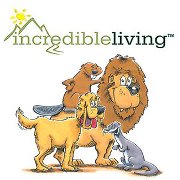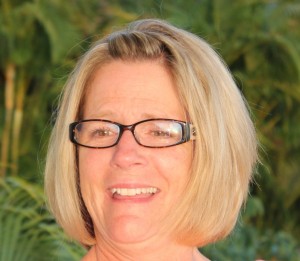Profiles Help Tony Husted Build Credibility Professionally – and Personally
Christian life coach Tony Husted, co-founder of new personal development ministry Awyken, wasn’t always tuned into how others could best use their strengths. Yet today the Leading From Your Strengths profiles are an integral part of Tony’s coaching process, thanks in large part to a deeply personal experience.
“My daughter and I have very different personalities,” says Tony. “During her teen years, we had a tough time communicating.” The conflict between the two was compounded by distance, since Tony’s daughter lived 1,600 miles away with her mother.
At that time Tony was an emerging leader in Christian coaching, a new niche in the personal development arena. He was among the life coaches contacted by Ministry Insights to test drive the Leading From Your Strengths profiles. Professionally, the match proved to be providential fit. The profiles provide personalized data, which in turn Tony uses with his coaching clients.
But as Tony soon learned, the profile experience was quite personal too.
Profile Data Turns a Relationship Around
While Tony is a self-admitted go-getter, his daughter is quiet and reserved. To ease the tension between them and to give his daughter a treat during her visits, he often invited her to eat out. “We would get in the car and I asked her, ‘Where would you like to go for dinner?’” said Tony. “But she didn’t know the city and there were too many choices.” As Tony pressed, his daughter retreated. The pattern repeated itself over and over … and affected other areas of their relationship too. Soon, Tony’s daughter resented her visits with dad and phone communication between them became almost non-existent.
So when Tony completed his profile – and subsequently had his daughter complete the Teen Insights profile assessment – the results were stunning. “I wasn’t simply hit with a ton of bricks,” says Tony. “It was more like a quarry of boulders fell on my head.” Tony’s strong aggressive bent proved to be a stark contrast to his daughter’s reflective approach to solving problems. Their scores lay on complete opposite sides of the spectrum. Tony realized he had been communicating with his daughter in ways that fit his strengths, not hers.
Tony put the data into practice right away. The next time his daughter arrived for a visit he approached their dinner dates differently, giving her a heads-up about 20 minutes before they were to leave and listing 3 or 4 options to choose from. “She made a decision immediately,” says Tony. “She simply needed adequate information in order to choose.” Then as Tony applied the Dos and Don’ts for Communicating and other tools in the profile report, his relationship with his daughter transformed nearly overnight.
Profiles are the Foundation for One-on-One Coaching
That was 10 years ago. While today Tony focuses most of his energies on training new coaches, he continues to work with a small roster of coaching clients drawn from all sectors life – ministry leaders, pastors, professionals, couples, and even other coaches who are building their practices. Then as now, the profile is the basis for Tony’s one-on-one coaching. A client completes the assessment and processes the data with Tony before addressing deeper issues. The profiles provide the foundation for what comes next.
“What the world calls coaching, the Bible calls disciple-making,” says Tony. “Both coaching and disciple-making are about helping people make life choices that bring about a more God-filled life.” The difference, Tony explains, is that coaching offers a personalized approach to applying biblical principles – one that speaks to the individual’s strengths. For instance, a sermon’s message may offer a prescriptive application suited for a predictable personality, but what about the person whose strength is dynamic? When Christ-followers know their strengths, they can better apply biblical teaching to their lives. A coach can facilitate that process.
“Coaching changes the way we do ministry,” says Tony. He envisions coach in every church trained to equip others to find their strengths and live them out biblically.
Profiles Help Facilitate Coaching the Coaches
That vision to train large numbers of Christian life coaches led Tony and Awyken co-founder Ed Smith to sponsor an upcoming Leading From Your Strengths conference and launch Awyken’s two inaugural programs: the Christian Coaching Professional Certification (for leaders, pastors, life coaches, and counselors who want to add coaching to their skill set) and a the first-ever Christian Life Coaching Lay Certification (equipping any Christ-follower to use coaching in informal ministry, including small groups, worship support, children’s ministry, or administrative work.)
Tony often explains to new coaches why the Leading From Your Strengths profile provides credibility: in a field that provides the intangible benefits of personal development, the profile report provides tangible feedback. Coaches can use a new client’s profile data as bridge into first conversations and can immediately interact with the client in a style that is comfortable for him. The process reduces the learning curve in the new coach-client relationship and gets the relationship off on accurate and strong footing.
Profile Effects Prove to Be Long-Lasting
Yet no matter how often Tony has seen how the profiles bring about life transformation in clients and coaching students, his most memorable experience in discovering strengths is his own.
His relationship with his daughter continues to thrive. After high school, she chose to leave her Midwestern city to enroll in a university just ten minutes from her dad’s home – and following graduation, she opted to remain in the area near Tony.
“The profiles completely changed the way I communicate with her,” says Tony. “It transformed our relationship.”
More about how other ministries use Leading From Your Strengths profiles
Counselor Jimmy McLeod Invests in Marriages and Teams With Profiles
CEO Uses Profiles to Build His Team — and Others
Coaching: Life Coach Guides 20-Somethings to Identity and Purpose
Transitions: Canadian Leader Helps Midlifers, Teams Transition Well
Versatility: Pastor, Educator Uses Profiles Across Ministry Areas
Using the Profiles: Adventure Kit Helps Children Discover Their Strengths
Coaching: Ministry Consultant Uses Profiles to Grow Teams
Profiles Help Grow Young Leaders in the Latin American Church
Coaching: How to Help People Apply the Profile
Leadership: Building Up Leaders Down Under
Second in a series that explains components of the Leading From Your Strengths profiles
Leading From Your Strengths (LFYS) Profiles are personalized, detailed 20-page reports which accurately describe your individual habitual patterns of behavior, thought, emotion, and communication. They provide you with sophisticated, objective insights and action steps about your unique strengths – data you can use immediately and long-term.
Teams, couples, families, and employers use the profiles in order to work together more effectively. Although the profile questionnaire is quick and simple to complete, it provides sophisticated data in a 20-page report in six sections:
- Your Natural Strengths
- Your Checklist for Communicating
- Your Ideal Environment
- How Others Can Best Lead and Motivate You
- Your Perceptions
- Your Adapted Strengths
This second article explains your report’s Checklists for Communicating and how you can use this data purposefully.
About the Checklist for Communicating Section
Good communication can be a powerful asset in building relationships at work, in the home, in ministry, or on a team,. Yet each of us is wired differently to give and receive information in various ways. These differences in communicating are part of what makes each of us unique.
The Checklist for Communicating section of your profile reveals the ways you best receive information and ways that prevent you from hearing what is shared. Statements listed here are neither inherently good nor inherently bad, but rather simply indicate communication style. Many people find this data not only to be highly accurate, but also enormously practical.
The section is comprised of two parts.
- Checklist for Communicating. This page provides a list of steps others can take when communicating with you. These statements are extremely helpful because they offer active steps, listed as verbs, which outline the best ways you receive information. The data helps those in your circle know positive actions they can take as they interact with you.
- Don’ts on Communication. Your internal make up means it may be more difficult for you to hear information when it is presented in certain ways. This page lists the approaches others should not take when communicating with you, since the tactics listed here raise barriers in your communication filter. When others to know what to avoid, they can intentionally choose other methods.
Ways to Use the Communication Section
Review your lists. As you read each statement in the Checklist for Communicating, make three lists: statements that most strongly describe your preferences, those that describe your preferences well, and those that describe your preferences the least. Use the same process, with the statements in your report’s Don’ts for Communicating to create three lists, in order of your preferences.
Self-understanding allows you to identify situations in which you feel comfortable communicating and to grasp why with others, communication misfires. This exercise gives you clarity.
The data also provides reassurance. Your ways of communicating are not right or wrong, but merely unique to you. Rather than recriminate yourself, now you can cultivate ways of communicating which are best for you. Further, when people around you communicate using other methods, you can appreciate their approach and use it with them, rather than judging it.
Share your preferences. Your lists of preferences are a powerful tool you can share with others in your family, work, or team. For instance, you may operate best when you have opportunities to ask questions. Share that preference with those in your circle so they can allow time and the environment for you to do so.
Understand others’ preferences. Study the Checklists for Communicating for your family members and team members. Ask them to identify their preferences so you can communicate in ways that are best for them and avoid the ways that work less well for them.
Good communication lays the groundwork for healthy relationships. Poor communication can not only inflict wounds, but tear people apart.
Proverbs 12:18 says, “Reckless words pierce like a sword, but the tongue of the wise brings healing” (NIV). The Checklist for Communicating gives you practical information you can use right away to foster wise communication that builds up those in your family, at work, and on your team.
More about Your Profile Report
A Map of Your Profile Report, Part 1: Your Natural Strengths
A Map of Your Profile Report, Part 3: Your Ideal Environment
A Map of Your Profile Report, Part 4: How Others Can Best Lead and Motivate You
A Map of Your Profile Report, Part 5: Your Perceptions
A Map of Your Profile Report, Part 6: Your Adaptive Strengths
“Young adults are looking for a sense of direction,” says life coach Annie Wukelic. “The Leading From Your Strengths profiles hook them in because they love learning about themselves and discovering their identity.”
After ten years as a registered nurse and stint as children’s ministry director at a large west coast church Annie turned to life coaching. The Leading From Your Strengths profile, taken during her coaching training, confirmed her interpersonal strengths. Annie scored a 10 as an Optimistic. To personalize the data, she converted her results to “I am …” statements like “I am outgoing,” “I am enthusiastic,” and “I am trusting,” a technique she had learned while working in ministry.
Once Annie had used her own profile data to create “I am …” statements, she realized the value of that exercise in helping others to discover or confirm their identity. Today she uses that powerful technique with her coaching clients.
Profiles Help 20-Somethings Discover Their Identity
Though a life coach for just a year, Annie has found her niche in the 20-something demographic, particularly young women. Most important to this age group, says Annie, is developing a sense of identity.
Such was the case with her first client, Kayla, who had graduated from college and was considering a career in social work – a more focused direction in her original vocational path. Annie invited Kayla to complete a Leading From Your Strengths profile, study the profile results, and then personalize the data in the form of “I am …” statements. One of Kayla’s statements, “I am a Shalom facilitator,” was a beautiful confirmation of her ability to be a peacemaker between family members and others in conflict. The process helped Kayla identify her uniqueness, strengthen her identity, and led to a breakthrough for her career direction. Today, Kayla is in graduate school, where she is pursuing a master’s degree in social work.
Profiles Help 20-Somethings Validate Their Identity
In other instances young adults have pursued a direction only to experience stress and conflict. Profile data reveals where that person may be adapting to their environment but not using their natural abilities.
Hannah, just in her mid-20s, held a key church staff position and loved ministry yet she was on the brink of burnout. “Hannah knew she was on a roller coaster and not in control, but she couldn’t figure out why,” says Annie.
Hannah’s profile results revealed the struggle: a significant disparity between her natural strengths and her adaptive strengths. She expended considerable energy to adapt to her particular role in her work environment. Hannah’s position did not use her strengths. As she studied her profile data and created a series of “I am …” statements, Hannah confirmed her call to ministry and her natural interpersonal skills. “The process validated Hannah’s natural, people-oriented abilities,” said Annie. “And she re-learned who she is in Christ.”
Hannah made a plan to leave her administrative role and then stepped into a short-term, overseas ministry position dealing directly with people. She is now using her strengths pursuing a new, fulfilling life according to her identified values.
Profiles Confirm “You Are God’s Masterpiece”
As Annie works with young clients, she notes a paradigm shift about four to six weeks into the process. It is at that point that the client has completed the profile and has begun to use the data to create “I am …” statements that confirm her identity. The proverbial light bulb goes off, says Annie, when a young person realizes her God-given uniqueness.
“The profile data reveals to these young ladies – or confirms for them – about who they are,” says Annie. “Then I simply remind them that the same truth appears in God’s Word: ‘You are God’s masterpiece. This is how God made you. He has created you anew in Christ Jesus, so you can do the good things He planned for you long ago.’” (Ephesians 2:10, NLT).
“The profiles are pivotal, helping them learn or re-learn who they are in Christ,” says Annie. “And that it’s a very good thing.”
More about how other ministries use Leading From Your Strengths profiles
Transitions: Canadian Leader Helps Midlifers, Teams Transition Well
Versatility: Pastor, Educator Uses Profiles Across Ministry Areas
Using the Profiles: Adventure Kit Helps Children Discover Their Strengths
Coaching: Ministry Consultant Uses Profiles to Grow Teams
Profiles Help Grow Young Leaders in the Latin American Church
Coaching: How to Help People Apply the Profile
Leadership: Building Up Leaders Down Under
When the Leading From Your Strengths profile was released in 2001, a friend presented Dr. Greg Hibbins with a complimentary copy. Greg completed the assessment – and the personal impact was profound. “The profile data helped me to understand who I am in Christ even after being in ministry so many years,” says Greg. “I finally saw what I was created for and who I need to partner with to accomplish the call God gave me.”
Greg went on to become a LFYS certified practitioner, and now uses profiles with others in all areas of his ministry as a pastor, counselor, and in business. Today the profiles are an integral part of his work as general manager of Christian Education Europe, both in promoting biblical education and in counseling educational partners and teams. “The profile is a versatile tool that can be used across so many levels,” says Greg.
Profiles Have Impact Across Ministry Areas
Looking back, Greg notes the impact of the profiles in four key ministry areas.
In the Church
As a pastor, Greg sought to better understand his elders and develop healthier working relationships by having them complete the profile. He used the subsequent data to equip his team for serving, and in turn the elders developed greater appreciation for each other and themselves. Soon members of his church completed the assessments too and were encouraged to serve in areas that matched their strengths. Outgoing, caring extroverts, for instance, became greeters and hosts. The effect on the church was immediate. Newcomers and members felt welcomed and loved when arriving at worship. Ultimately the church grew into a stronger, healthier body.
That personal experience lends credibility when Greg counsels other church leadership teams. In one case, he discovered considerable conflict among a church’s elders. After the team completed the profiles, Greg found the source of the tension: three elders liked face-paced change and were frustrated by one who preferred slower deliberations in order to consider alternatives and ramifications. As the fast-paced elders gave more time to their slower-paced colleague to work through decisions, the team developed a greater appreciation for each other. Later when a staff position opened up, the team sought a deliberate decision-maker to bring greater balance into the eldership. Now five years later, the church has grown by 60% and is thriving.
In Business
The profiles’ impact extends beyond church teams to the business environment as well. Greg invited the Christian Education Europe staff to undergo the profile process in order to ensure greater understanding, but also to help identify areas of weakness on the team. “The team has since added staff with those particular strengths we were once missing,” says Greg. “Now we have created a more complete team.”
In Education
As Greg counsels schools, parents, and students referred to him by educational partners, he regularly calls upon the profiles to improve the educational process. Student profiles, in particular, provide powerful data about how children learn, leading to better academic performance and behavioral management.
One student, pressured by her parents to choose a strong academic track and pursue a medical or legal career, became depressed and contemplated suicide. When leading her through the profile process during counseling, Greg discovered the student’s strong interpersonal skills and creative bent, along with her distaste for details and facts so necessary in a more scholarly career. The data was a revelation to her parents, who subsequently encouraged their daughter to pursue her God-given bent. Today, she is a very successful professional photographer.
In Individual Development
Not only are the profiles useful in building relationships within teams, but also in one-on-one coaching. “I use the profile to help people maximize their gifting,” says Greg as he counsels professionals and individuals who struggle with career direction or personal challenges. “They get to the core of self-understanding and acceptance.” His clients discover their place in God’s plan. That, in turn, builds hope in those he counsels so they can “make the dream work.”
Profiles Have Impact Rooted in Truth
While Greg has discovered the benefits of using profiles to inform the individual, team, and community – and build a ministry – he believes their impact is so profound because they are rooted in the ultimate truth.
“The profiles’ greatest asset is their basis in the Word of God,” says Greg. “They are great empowering tools because they are founded in the truth that sets people free.”
More about how other ministries use Leading From Your Strengths profiles
Using the Profiles: Adventure Kit Helps Children Discover Their Strengths
Coaching: Ministry Consultant Uses Profiles to Grow Teams
Profiles Help Grow Young Leaders in the Latin American Church
Coaching: How to Help People Apply the Profile
Leadership: Building Up Leaders Down Under
Life Coach Helps Create Children’s Adventure Kit after Taking Her Own Profile
Karen Van Riesen first discovered Leading From Your Strengths profiles in 2008 when she trained to become a Christian life coach. The profile assessments were listed as a helpful resource to use with clients, so she completed one for herself first. The impact was overwhelming. “For the first time in my life I valued who I was,” said Karen. “What a difference this would have made if I had known this information about myself as a child and if I understood my children’s strengths while I was raising them!”
The profiles were so transformational for Karen that she became a profile certified trainer – and then set about with fellow educator Betty Good to partner with profile creator Rodney Cox to build a child’s version in a kit form.
Together she and Betty produced the Incredible Creatures Live Adventure, released in 2010. In this two-part experience, children discover their strengths by identifying with one of four animal protagonists and then learn how to use those strengths well. The adventure is based on the science behind the Lion, Otter, Beaver, and Golden Retriever behavior personalities, first made popular in the Leading From Your Strengths profiles by Ministry Insights partner Dr. John Trent.
The kits are now used worldwide in schools, churches, and camps to help more children to find out how God made them and discover their God-given strengths.
 Benefits for Children
Benefits for Children
As Karen and Betty began to share the adventure with education and home school colleagues they discovered the powerful impact the profiles can have for children. “My son is autistic and doesn’t pick up on much,” said one parent, in tears. “But he understood that adventure. And now he understands himself.”
Entire classes are transformed. One large Canadian Christian school facilitated the adventure for its whole staff and student body, inspiring a third-grade teacher to repeat the experience every year with her new students. As she leads her students through the adventure, the teacher hangs posters on classroom walls depicting the four behavior types and their corresponding animals (Lion, Otter, Beaver, and Golden Retriever), posting each child’s name with his or her most dominant behavior. The teacher and her students refer to the posters throughout the year as they work together to communicate and understand each other. “Once my child participated in the Incredible Creatures Live Adventure, his relationship with his teacher turned around completely – for the better,” said one parent.
Benefits for Teachers and Staff
While teachers who lead the adventure have access to their own profile assessment (allowing them to understand their own strengths and how to interact with students), Karen has found that the profile process transforms entire staffs, too. One school team working with Karen discovered every person on the staff had a Golden Retriever bent – easy-going, quiet, diplomatic, relational – with the exception of one member. “No wonder we’re not growing,” the principal said to Karen. “We are all getting along so well that we’re not reaching out. I need to hire an Otter with that warm, outgoing, enthusiastic personality to promote the school.” After a profile-driven hiring process, the staff grew. Soon, the school did too, so much that they have moved into a bigger facility.
Benefits for Families
The 2012 release of the kit’s family version, Incredible Creatures Family Adventure, has been a boom to homeschoolers. “The adventure helps homeschooling parents know what each child and his behavior style need in order to learn best,” says Karen. “Then I help them create a plan that will ensure each child gets to be in his ‘natural habitat’ at some point during the day.”
Data from the Family Adventure increases cooperation in families beyond the homeschool environment, allowing parents to understand their own behavior as well as their children’s bent. “It’s a fun way to discover each others’ strengths and weaknesses,” said Donna, a parent of two boys. “Learning our styles gives us a chance to see where we all need more of a balance.”
How to Maximize Benefits for Children, Staff, and Families
Karen has found that the people who need the profile process most may discount its value. Leaders who are task-oriented, for instance, may not value the “people” part of the equation and thus may not embrace the process, diminishing its impact.
Yet for those who recognize the need to understand others’ strengths can benefit tremendously, whether in hiring different personality strengths to fill gaps on their team, cultivating those whose strengths differ from their own, or simply validating the strengths in others.
That’s why the profile process remains central to Karen’s ministry, whether she facilitates an Incredible Creatures Live Adventure with churches, schools, homeschoolers, and families, empowers leaders and teachers through the adventure’s leadership resources, or uses the Leading From Your Strengths profiles when coaching clients and teams.
“Before I completed the profile process for myself, I had limited respect for those who are different from me. I simply thought they had something wrong with them,” says Karen. “Now I welcome those differences because others have so much to teach me. And they learn from me as well.”
More about how other ministries use Leading From Your Strengths profiles
Coaching: Ministry Consultant Uses Profiles to Grow Teams
Profiles Help Grow Young Leaders in the Latin American Church
Coaching: How to Help People Apply the Profile
Leadership: Building Up Leaders Down Under
The Benefits to Knowing Your Child’s Strengths
Fourth in a four-part series on parenting from your strengths
Rob and Kate have three sons. Blond hair, blue eyes – all three look alike. In fact, two are twins. Yet the three children have completely different personalities. Adam, the oldest, is sensitive and caring. He dislikes change. Bryan, on the other hand, is independent, drawing on his interest in science to find logical answers to problems while Matt, spontaneous and outgoing, loves being around people and talks with everyone he meets.
Over time as Rob and Kate struggled to parent their boys, they worked hard to treat each sibling equally. They could not understand why that approach led to even more conflict.
Division is not God’s desire for Rob and Kate’s family, nor yours. As this couple committed to finding a common reference point, they discovered how God’s Word was their “true north.” They drew upon their individual strengths in parenting and found that their differences complemented one another, making them a stronger parenting unit together rather than separately. Rob and Kate were ready to add a third key coordinate to their Global Parenting System (GPS): an understanding of their children’s unique, God-given strengths.
A True-North Reading About Parenting Your Children
A true-north reading from Proverbs 22:6 says, “Train up a child in the way he should go and when he is old he will not depart from it.”
It can be tempting embrace a modern-day interpretation of that verse as, “Train up a child in the way you want him to conduct his life and he’ll stick with it.” In doing so, many parents fall into two common traps: forcefully pushing a child to live a certain way, insisting he conform – or pointing the child towards a specific path but sidestepping responsibility and avoiding the walk alongside him during the process.
What Are Your Child’s Strengths?
But the verse’s words mean something different altogether, suggesting a personalized, intentional approach. The literal translation reads, “Train up a child according to his bent.” In other words, parents are to study and know a child’s bent, or tendencies, and then train him to maturity according to those strengths.
Understand your child’s bent. Just as identifying your unique strengths allows you bring those skills to the parenting equation, in the same way identifying your child’s unique strengths (his “bent”) helps him contribute to a richer, more diverse family unit in a satisfying way. Understanding your child’s strengths is a key to blend, allowing you to take action steps to value those differences, improve communication, and build supportive, closer relationships in your family.
You can help your child discover his personal strengths through a simple, 10-minute online strengths assessment. The resulting data helps your child know how he makes decisions, accomplishes tasks, and handles conflict – giving both him and you an objective platform to share information and grow in understanding.
Train your child according to his bent. Imagine the benefit to your child when he understands his strengths at an early age. As you lead your child through a process of self-understanding, over the years you can train him to use his skills and abilities in a healthy, powerful way.
In that sense a parent is like an athletic trainer, one who works alongside an athlete watching every move and analyzing carefully. What are the athlete’s strengths? How can the athlete maximize her impact on the field or on the court? The trainer continually finds ways to improve the athlete’s form. He offers tips. He affirms the athlete’s progress. The trainer stands along the sidelines, encouraging and cheering on the athlete. He knows when the athlete needs a time out. After a workout or a game, the trainer points out to the athlete what she did well. He helps the athlete set new goals for next time. Training is consistent work over the long haul. The result? The athlete becomes a powerful asset to her team. The team benefits from her strengths and the athlete experiences satisfaction, knowing she is contributing and making a difference.
A parent, like a trainer, becomes a student of a child’s strengths and walks alongside the child to help maximize those strengths in life and experience satisfaction in contributing to the whole.
Benefits Extend Beyond Parenting
While most parenting is accidental rather than deliberate, parenting from your strengths is intentional. And the benefits of relying on God’s Word as your “true north” in parenting, knowing your individual strengths, and understanding your child’s strengths stretch beyond building stronger bonds in your family life.
By equipping your child to know and maximize his uniqueness, you demonstrate the value God places on each individual. But even more than that, you give your child a precious gift: a lifelong understanding of how he can live and lead from his strengths. Throughout his life, you child will benefit by knowing his strengths and how he can contribute in all kinds of relationships and situations.
Can there be a more satisfying reward in parenting than in knowing you were part of guiding your child to know his strengths and in learning to use them?
I don’t think so.
More on Parenting From Your Strengths
Parenting From Your Strengths, Part 1: How a GPS Can Help You Be a Better Parent
Parenting From Your Strengths, Part 2: How a Parent Finds “True North”
Parenting From Your Strengths, Part 3: Will You Bury, Boast, or Build on Your Parenting Strengths?
Is Your Eyesight Out of Focus?
If your vision is less than 20/20 you’ve experienced that “Eureka!” moment. As the optometrist places glasses on the bridge of your nose, you open your eyes and poof! You can see clearly – whereas before, images were fuzzy and indistinct.
 When you can’t see well, life is unnecessarily stressful. Blurred objects, squinting, fatigue, headaches … it’s easy to make mistakes, misjudging what you see. Frustration builds.
When you can’t see well, life is unnecessarily stressful. Blurred objects, squinting, fatigue, headaches … it’s easy to make mistakes, misjudging what you see. Frustration builds.
The same can be true when you can’t clearly see the strengths in those around you.
Your team members, your spouse, your family – people are motivated when they feel understood and valued. But like you, when they are misunderstood or misjudged, they become discouraged, angry, and even apathetic. Conflict rises; division follows.
Most of the time, you do not purposely misunderstand those around you. Rather, you simply don’t see them – and their strengths – clearly.
Getting Your Vision Tested
During an eye exam, the optometrist conducts a series of tests to determine how your eyes are working. Resulting data shows whether you are nearsighted (close objects appear clear, but those far away are blurred) or farsighted (close objects are fuzzy but distant objects are clear.)
In both cases, your eyes do not focus images correctly. The focal point is on the incorrect location – whether in front of the retina (nearsightedness) or behind it (farsightedness).
When it comes to seeing those around you, where do you focus? It’s easy to let differences become your focal point. They present a sharp contrast to your own familiar way of doing things. In fact, you may not even notice others’ strengths because you’re fixated on differences.
Change Your Prescription
But what happens when another person’s strengths are pointed out to you? Your vision shifts, not unlike the transformation that happens when you slip on eyeglasses. As you train your attention on a person’s strengths, those strengths come into focus.
Blurred eyesight is stressful … even dangerous. But it can be corrected. A distorted view of others, fixated on differences, is risky too. But you can correct it. Understanding another person’s strengths is like putting on a different set of glasses – a set that allows you to see more clearly. You simply need to be willing to put them on.
Fuzzy or clear? How you view others is up to you.
More Devotionals from Ministry Insights
Devotional: Focus on the As, Not the Fs
Devotional: Pen in Hand: Embracing Your Strengths
Devotional: Individuality or Conformity – Must You Choose?
Devotional: Understanding Others’ Strengths – Do You Have a Good View?
Devotional: How to Avoid “The Unimportance Trap”
Marriage and Ministry, Part 4:
The Risks and Rewards of Leading From Your Strengths
Of all places, the Christian church can be a refuge from the relational battles that rage in our culture. But harmony and reconciliation are not flourishing in the body. Rather, today’s ministries and churches are routinely characterized by division – or at best, the status quo.
Such was the scenario after today’s staff meeting when Pastor Kevin closed the door to his office, leaned against it, and sighed. Bickering among his team had turned into more than a debate. There was actual division. The lack of oneness and unity in his church staff grieved Kevin, the senior pastor of a large church. Until recently, he had concluded the only way out was to resign.
Now he felt differently. He knew from personal experience what can happen when you value strengths in others.
You may recall from our previous three articles that Kevin had experienced conflict and isolation in his marriage and home, too. He had approached his wife, Karen, and together they resolved to value each other’s strengths, a principle they were now applying to both their marriage and to relationships with their children.
 So on this night, as Kevin talks with his wife about the division in his staff, it is Karen who suggests that the concepts the couple learned are foundational to all relationships. Couldn’t Kevin apply those strengths principles in the church staff by helping team member value strengths in each other to bring about unity?
So on this night, as Kevin talks with his wife about the division in his staff, it is Karen who suggests that the concepts the couple learned are foundational to all relationships. Couldn’t Kevin apply those strengths principles in the church staff by helping team member value strengths in each other to bring about unity?
The Risk of Personal Exposure
Kevin pondered how best to approach his staff with the idea of learning to identify their strengths and value strengths in others. Karen suggested honesty. “Tell them how you and I struggled to resolve our differences,” she said. “Explain how learning to value each other’s strengths – rather than trying to change each other – made the difference.”
It was a risk, but in his heart Kevin knew she was right. Romans 14:19 says, “Let us therefore make every effort to do what leads to peace and to mutual edification.” Kevin yearned for his staff to be at peace, working together creatively and productively. As a leader he needed to be willing to make every effort to create that kind of environment … even when it meant personal exposure.
The Risk of Vulnerability
If Kevin’s staff sought only to promote their private ends, to follow their own passions and prejudices, they would continue to be filled with strife and contention. They could not edify one another while quarreling. But if the team was able to see each other’s strengths and value them, the entire dynamic could shift.
Kevin needed to risk vulnerability to his team, be willing to acknowledge others’ strengths, and affirm what they contributed – just as much as the team needed him to lead. The process required Kevin to step down from his leadership pedestal and be authentic. An effective leader does not possess all the skills and abilities necessary for ministry. If Kevin could show staff members that he valued their individual uniqueness and admit how much every person contributed, they would be able to embrace what each other brought to the team, too.
The Rewards
After much prayer with Karen, Kevin approached his team and explained the Leading From Your Strengths team-building – a positive experience that emphasizes each individual’s unique strengths and helps them understand why God strategically placed them together in the ministry. Each staff member completed the strengths profile. Then Kevin took the lead in sharing and listening as each team member articulated openly about how God had uniquely wired them. As team members learned to identify and understand their God-given abilities in solving problems, processing information, managing change, and facing risk, a new attitude emerged. They saw how to value strengths in each other. The group soon realized how God had brought them together to complement each other’s strengths in an amazing way.
Now, six months later Kevin left a church staff meeting, closed his office door, and dropped to his knees – thanking God for the transformation that had taken place in both him and his team. Kevin smiled. He was no longer alone, marooned on a ministry island. He has hope.
God intends for His Kingdom to exhibit a spirit of oneness, a principle that Kevin and Karen were willing to cultivate first in their marriage and then transfer to other areas of their lives. Kevin had learned that leading from your strengths is not only possible. It is God’s design … for marriages, for families, for churches, and for teams.
Read the rest of our Marriage and Ministry series
Marriage and Ministry, Part 1: Island of Exile or Island of Escape?
Marriage and Ministry, Part 2: Healing Begins with Humility
Marriage and Ministry, Part 3: Your Spouse’s Strengths May Surprise You
Race or Slow Pace? Two Ways to go about Managing Change
Change is a constant for your team. Like other transitions a team faces (such as processing information and solving problems), your team members manage change in radically different ways.
As a team conducts ministry, it passes through four inescapable transitions – movements or changes that take the team from one “place” to another. In this part 4 of 5 in our Transition Series, we examine how God provides specific ways your team can thrive through the transition of managing change.
- Some team members take a dynamic approach to managing change and adapt quickly, always alert for opportunities and ready to seize them with energy and enthusiasm.
- Some embrace a predictable approach. They want explanation for change, a clear sense of direction, and time to understand it before they move forward.
 The children’s ministry team met to prepare for their fall launch. “Who will be in charge of registration?” Katie asked, looking around the room and acknowledging a volunteer. “OK, thank you, Mike.” Katie looked at the next item on the agenda. She was ready to move forward at a quick pace.
The children’s ministry team met to prepare for their fall launch. “Who will be in charge of registration?” Katie asked, looking around the room and acknowledging a volunteer. “OK, thank you, Mike.” Katie looked at the next item on the agenda. She was ready to move forward at a quick pace.
But Joyce raised her hand. “I’m concerned about numbers,” she said. “Last year, we had twice as many children as the year before. What if we double again this year?” Soon the room was peppered with questions. Would there be enough teachers and leaders? Where would the classes meet? Joyce’s question had changed the pace of the meeting.
Katie called the team to order. “I am sure God would not want us to turn anyone away,” she said briskly. “He will want us to figure a way to make it work. Let’s keep going.”
Joyce bristled. In her mind there were too many variables about the exploding children’s program. She desperately wanted to discuss potential scenarios, but Katie had already moved onto the next agenda item.
Two Different Ways to Manage Change
Katie and Joyce represent two opposite approaches to managing change. Both personality types bring strengths to a team.
Katie, a Dynamic, processed the change with energy. She was eager for what growth would bring, confident the team could adjust, and excited to make it happen. Dynamics like Katie bring enthusiasm to a team.
Joyce, however, preferred a more deliberate approach. As a Predictable, she needed reasons why the team would make extra efforts to accommodate more children and time to adjust before she could buy in to the changes. She brought stability to the team.
Each approach also represents a unique pace: multi-tasking, intense urgency from the Dynamic and the Predictable’s unhurried, methodical steadiness. These strengths can collide to create turbulence and conflict – or balance each other to navigate change in a healthy way.
Both Strengths Work Together
The situation might have created a deep rift in the team. Fortunately, Katie and Joyce both understood their personalities when it came to facing change. While Katie was the team leader, she knew that her Dynamic tendency was to sprint through issues quickly and keep the conversation moving, even discussing many things at once. But she recognized the need to address issues one by one for Predictables in the group like Joyce. Likewise, once Joyce realized there was the opportunity to reach more families if the ministry expanded, she was willing to consider different ways to conduct the program than the team had in the past.
The next meeting began this way: “Registrations are up considerably from last year,” Katie said. “Let’s take some time to think about how we can manage this. Joyce, do you have some input?”
Will your team race through change or take a slower pace? Speed and deliberation balance each other. That’s why Dynamics and Predictables who understand and value each others’ strengths – and intentionally work to blend together – can be a recipe for success.
Other articles in the Transitions series
Transitions, Part 1: Constructive or Destructive?
Transitions, Part 2: Processing Information
Transitions, Part 3: Solving Problems
Transitions, Part 5: Facing Risk







